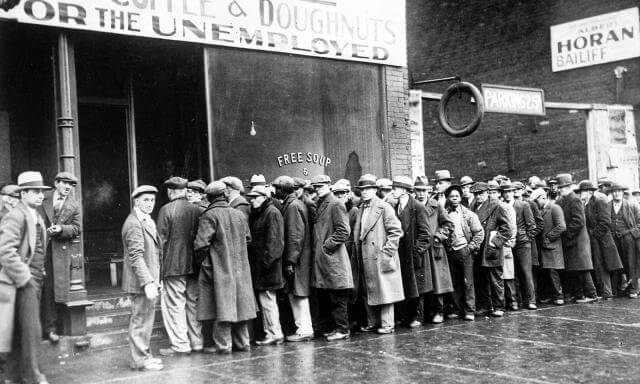
The Great Depression, ca. 1929
*
Nothing goes only upwards. At least that is what the popular economic theory and the real-life teach us. The markets go up and down and this is how it is supposed to be.
*
Not anymore! If you trace history back to the ancient Roman Empire you will see that there are plenty of recessions down the road. Like forest fires, they wipe out bad businesses and punish careless investors making space for new profitable enterprises.
*
In 1935-1936 John Maynard Keynes came with his most influential work The General Theory of Employment, Interest, and Money and that changed the game forever. Basically, it advocates state intervention in the economy. Today’s leaders and politicians are more Keynesian than ever - there is a competition that will help more, who will print more. Anti-Covid programs, unlimited social care, bailing out bad businesses, you name it. The printing presses are under pressure and the debt pile is growing higher than ever. The governments and central banks are competing who will debase their currency more. This is how you punish disciplined savers and encourage reckless spenders.
*
Normally a recession happens every 7-8 years and wipes the bad blood out of the economy. Yeah, a lot of people experience discomfort and pain but this is the normal way of doing things. With the governments and central bankers trying to prevent recessions from happening they create much bigger monsters, economic crashes, which tend to be scarier every next time. The last economic crisis from 2007-2008 is years behind us followed by an unprecedented bull market. There is a whole new generation who doesn’t remember the previous collapse but as Mark Twain once said: “The history doesn’t repeat itself but it often rhymes.” Adjusting bandages and pumping more and more fiat currencies into the economy and not curing what seems to be a systematic problem only makes every next market crash bigger and stronger. Combine that with a whole new bunch of problems such as the Covid-19 pandemic, whole countries shutdown, unprecedented bailouts, paying people to stay at home in some countries, etc., etc. and it looks like we are headed for a disaster. Why take a chance not to be prepared?
*
The precious metals are the ultimate hedge against market crashes, spiraling inflation, and economic turmoil. The governments are debasing their currencies since the dawn of time but nowadays without the gold standard, you need sound money more than ever. There are winners and losers after every great transition of wealth.
*
Which side are you on?
LEGAL DISCLAIMER:
While the author has made every effort to provide accurate data and information in the preparation of this article, neither europabullion.com nor the author assumes any responsibility for errors or for changes that occur after the publication. The information referenced is believed to be reliable, accurate, and appropriate, but is not guaranteed in any way. The strategies and forecasts herein are the author’s sole opinion and could prove to be inaccurate. No company, individual, or entity compensated the author or europabullion.com for mention in this article.
The article contains specific names of companies, strategies, different currencies, shares, government bonds, types, and sizes of precious metals, none of which can be deemed recommendations to the readers. Reading this article does not constitute a fiduciary relationship. Data, company-specific or otherwise, will not be updated on an ongoing basis. After the publication in the resources, the author and europabullion.com will not be responsible for future developments.
A registered financial advisor is always the best source of guidance in making financial decisions. The author is not a registered financial advisor and does not address the individual financial condition of the reader.

